Abstract
A system of cells made permeable by treatment with high concentrations of surcrose (plasmolysis) has been exploited to study the excision repair of ultraviolet-irradiated deoxyribonucleic acid in Escherichia coli. It is demonstrated that adenosine 5'-triphosphate is required for incision breaks to be made in the bacterial chromosome as well as in covalently closed bacteriophage lambda deoxyribonucleic acid. After plasmolysis, uvrC mutant strains appear as defective in the incision step as the uvrA-mutated strains. This is in contrast to the situation in intact cells where uvrC mutants accumulate single-strand breaks during postirradiation incubation. These observations have led to the proposal of a model for excision repair, in which the ultraviolet-specific endonuclease, coded for by the uvrA and uvrB genes, exists in a complex with the uvrC gene product. The complex is responsible for the incision and possibly also the excision steps of repair. The dark-repair inhibitors acriflavine and caffeine are both shown to interfere with the action of the adenosine 5'-triphosphate-dependent enzyme.
Full text
PDF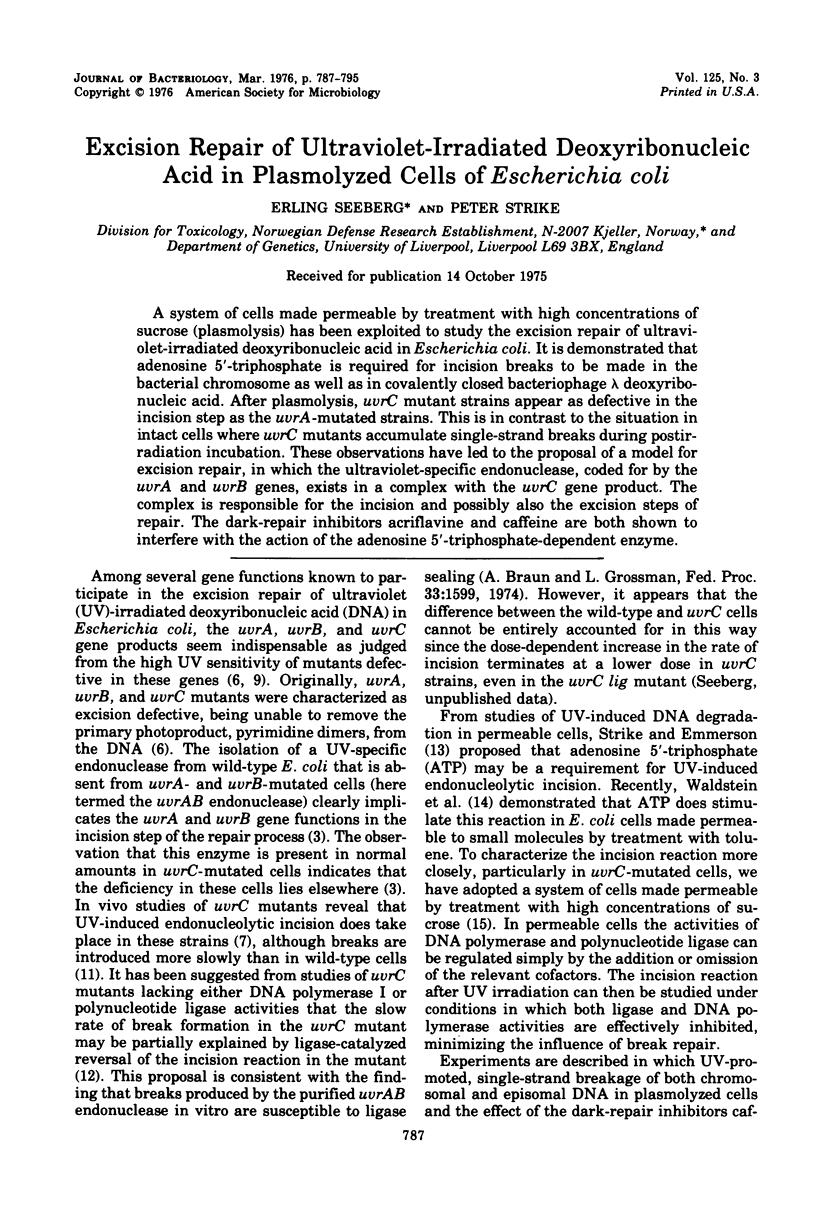
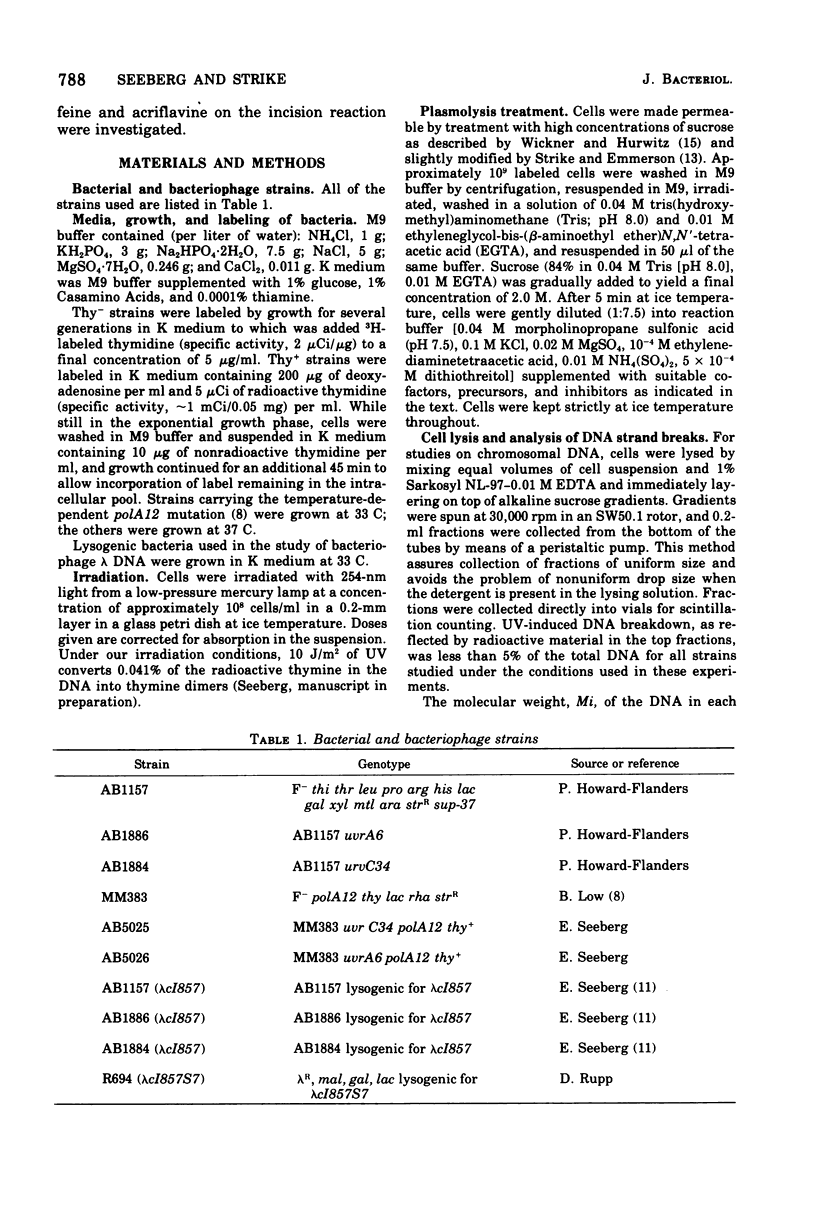
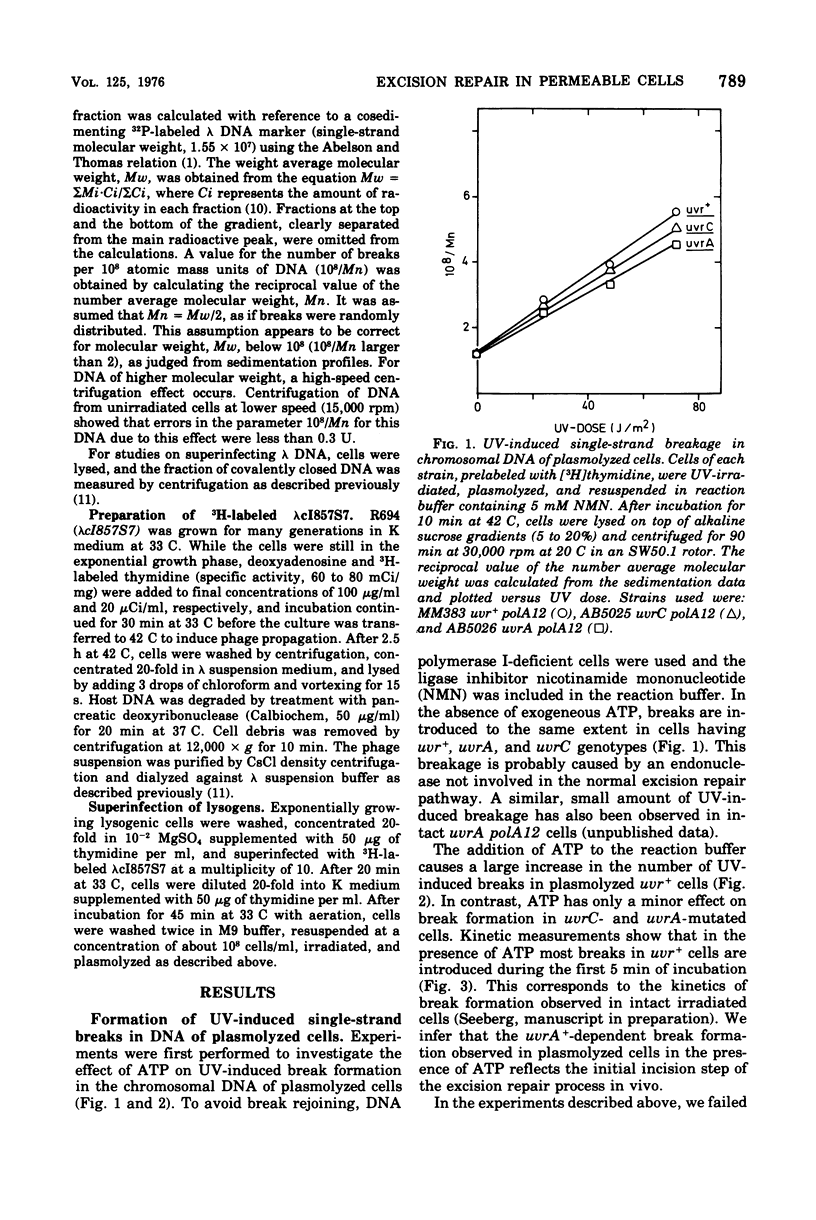
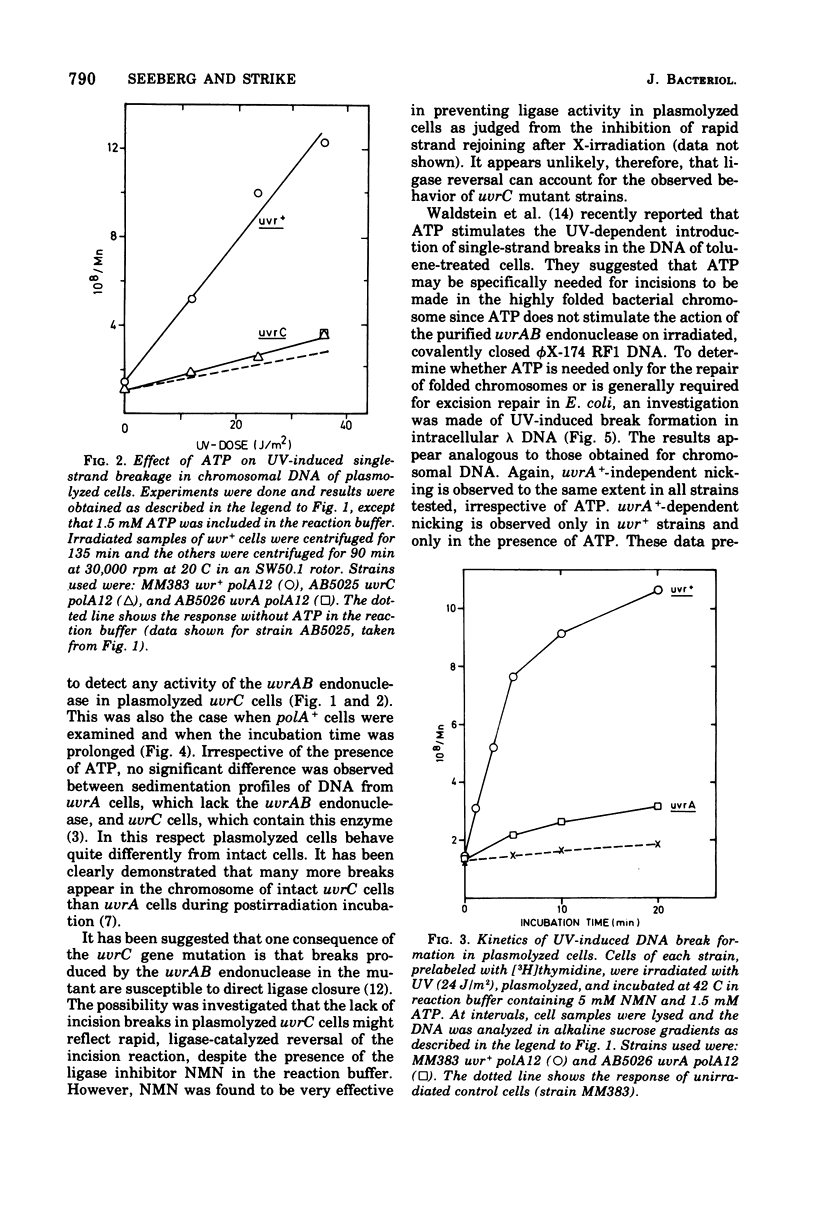
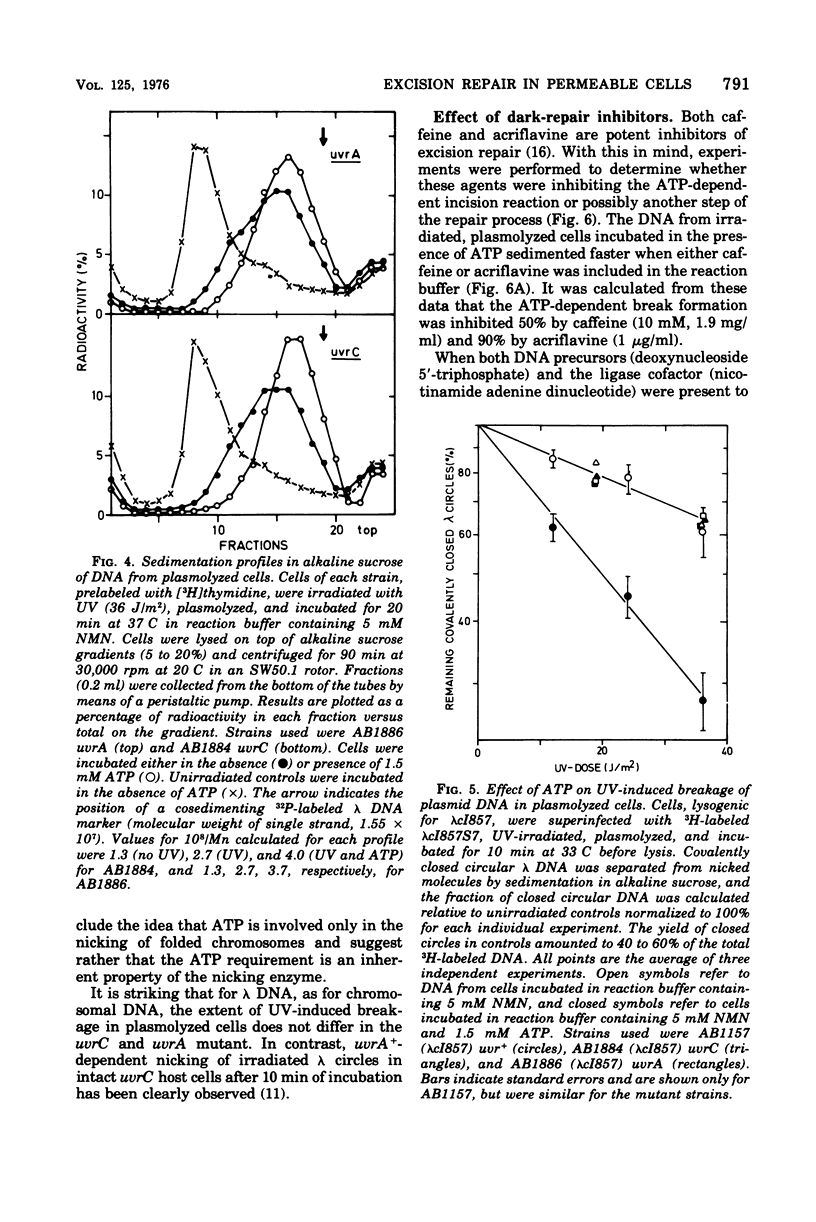
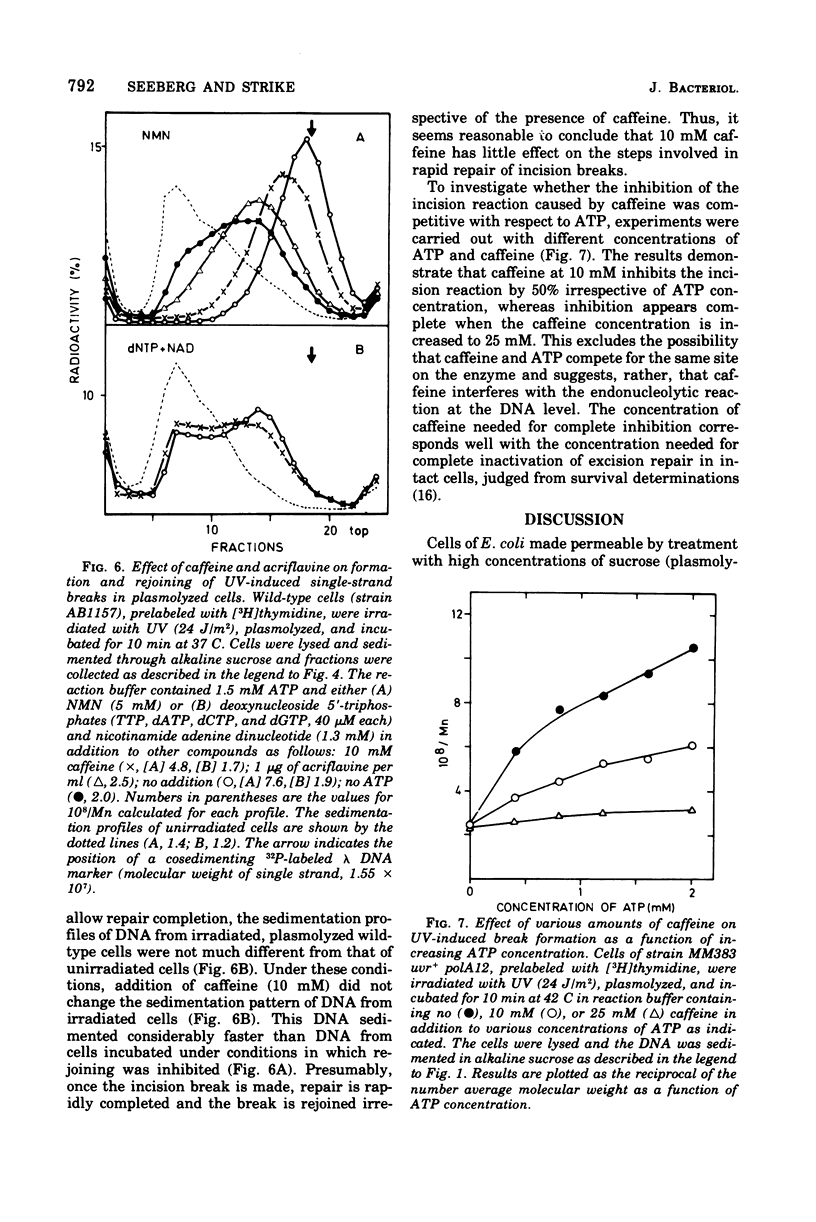
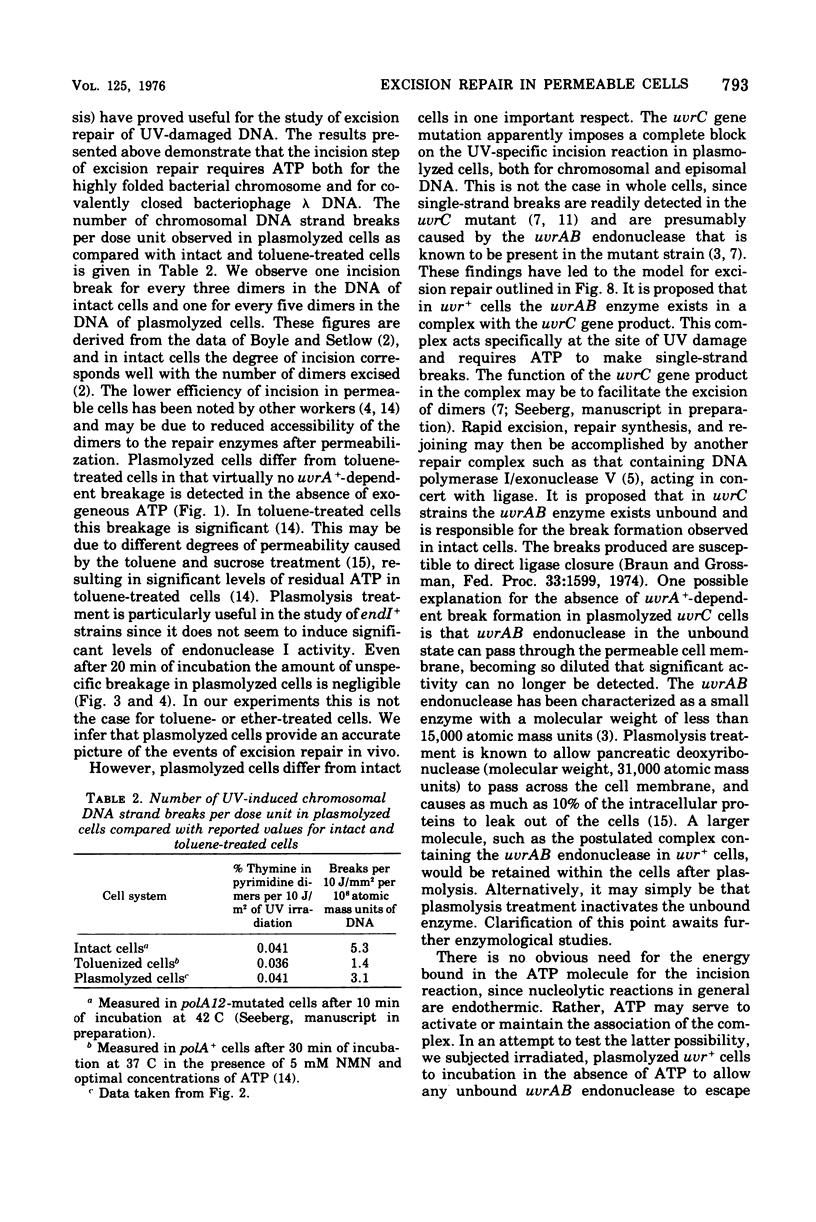
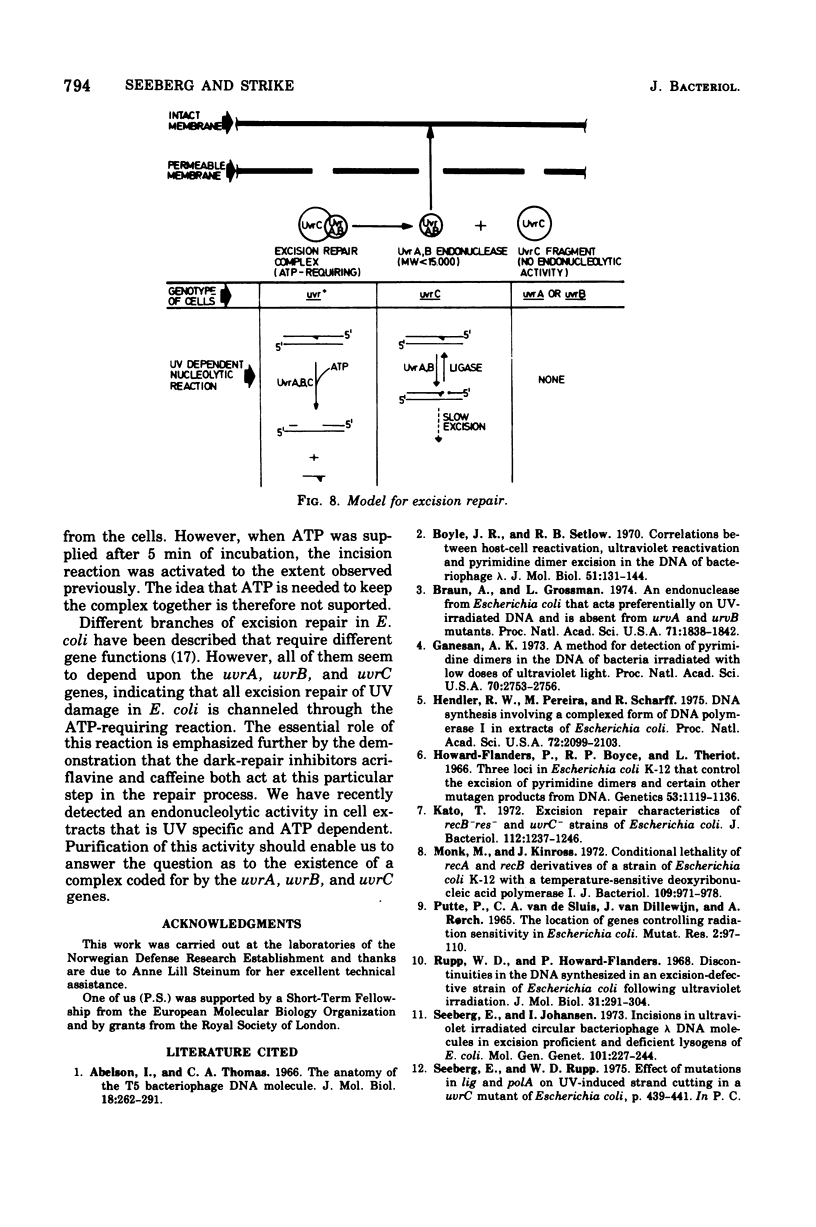
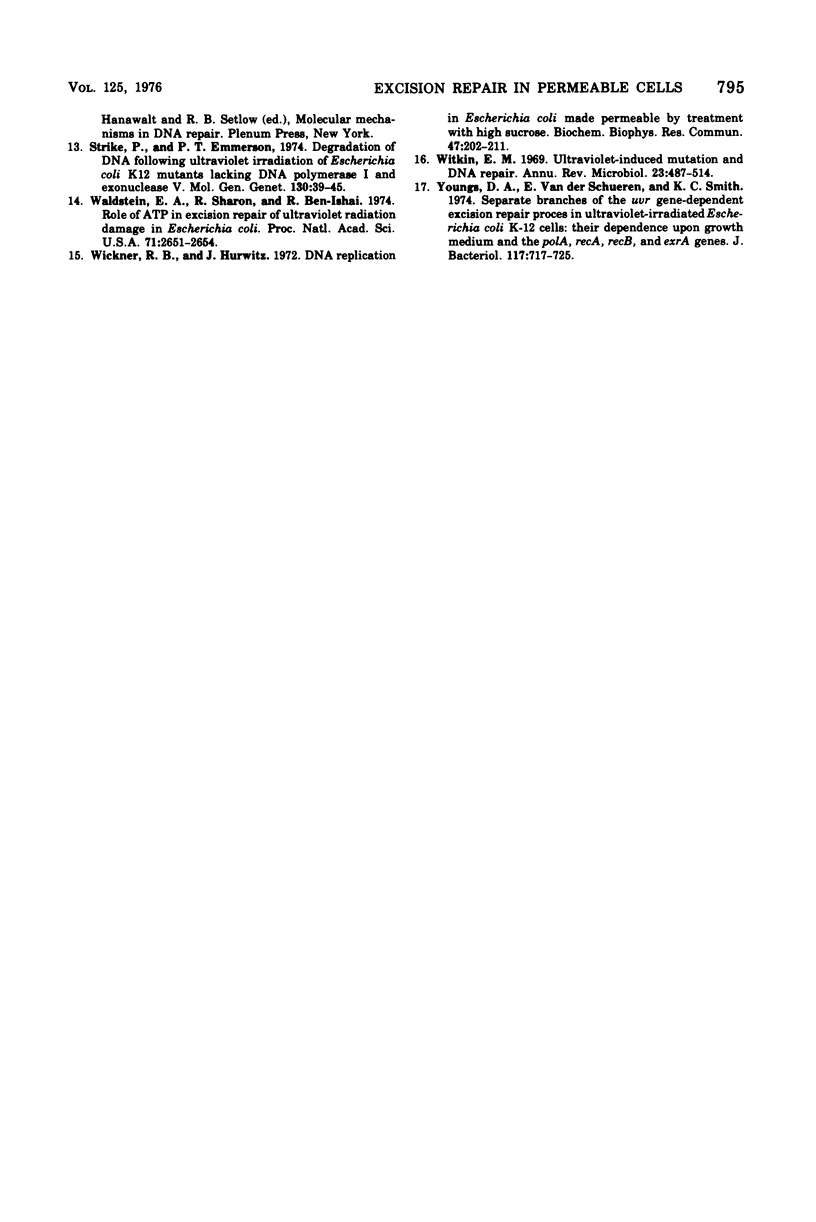
Selected References
These references are in PubMed. This may not be the complete list of references from this article.
- Boyle J. M., Setlow R. B. Correlations between host-cell reactivation, ultraviolet reactivation and pyrimidine dimer excision in the DNA of bacteriophage lambda. J Mol Biol. 1970 Jul 14;51(1):131–144. doi: 10.1016/0022-2836(70)90275-5. [DOI] [PubMed] [Google Scholar]
- Braun A., Grossman L. An endonuclease from Escherichia coli that acts preferentially on UV-irradiated DNA and is absent from the uvrA and uvrB mutants. Proc Natl Acad Sci U S A. 1974 May;71(5):1838–1842. doi: 10.1073/pnas.71.5.1838. [DOI] [PMC free article] [PubMed] [Google Scholar]
- Ganesan A. K. A method for detecting pyrimidine dimers in the DNA of bacteria irradiated with low doses of ultraviolet light. Proc Natl Acad Sci U S A. 1973 Oct;70(10):2753–2756. doi: 10.1073/pnas.70.10.2753. [DOI] [PMC free article] [PubMed] [Google Scholar]
- Hendler R. W., Pereira M., Scharff R. DNA synthesis involving a complexes form of DNA polymerase I in extracts of Escherichia coli. Proc Natl Acad Sci U S A. 1975 Jun;72(6):2099–2103. doi: 10.1073/pnas.72.6.2099. [DOI] [PMC free article] [PubMed] [Google Scholar]
- Howard-Flanders P., Boyce R. P., Theriot L. Three loci in Escherichia coli K-12 that control the excision of pyrimidine dimers and certain other mutagen products from DNA. Genetics. 1966 Jun;53(6):1119–1136. doi: 10.1093/genetics/53.6.1119. [DOI] [PMC free article] [PubMed] [Google Scholar]
- Kato T. Excision repair characteristics of recB - res - and uvrC - strains of Escherichia coli. J Bacteriol. 1972 Dec;112(3):1237–1246. doi: 10.1128/jb.112.3.1237-1246.1972. [DOI] [PMC free article] [PubMed] [Google Scholar]
- Monk M., Kinross J. Conditional lethality of recA and recB derivatives of a strain of Escherichia coli K-12 with a temperature-sensitive deoxyribonucleic acid polymerase I. J Bacteriol. 1972 Mar;109(3):971–978. doi: 10.1128/jb.109.3.971-978.1972. [DOI] [PMC free article] [PubMed] [Google Scholar]
- Rupp W. D., Howard-Flanders P. Discontinuities in the DNA synthesized in an excision-defective strain of Escherichia coli following ultraviolet irradiation. J Mol Biol. 1968 Jan 28;31(2):291–304. doi: 10.1016/0022-2836(68)90445-2. [DOI] [PubMed] [Google Scholar]
- Seeberg E., Rupp W. D. Effect of mutations in lig and polA on UV-induced strand cutting in a uvrC strain of Escherichia coli. Basic Life Sci. 1975;5B:439–441. doi: 10.1007/978-1-4684-2898-8_3. [DOI] [PubMed] [Google Scholar]
- Strike P., Emmerson P. T. Degradation of DNA following ultraviolet irradiation of Escherichia coli K12 mutants lacking DNA polymerase I and exonuclease V. Mol Gen Genet. 1974 Apr 9;130(1):39–45. doi: 10.1007/BF00270517. [DOI] [PubMed] [Google Scholar]
- Waldstein E. A., Sharon R., Ben-Ishai R. Role of ATP in excision repair of ultraviolet radiation damage in Escherichia coli. Proc Natl Acad Sci U S A. 1974 Jul;71(7):2651–2654. doi: 10.1073/pnas.71.7.2651. [DOI] [PMC free article] [PubMed] [Google Scholar]
- Wickner R. B., Hurwitz J. DNA replication in Escherichia coli made permeable by treatment with high sucrose. Biochem Biophys Res Commun. 1972 Apr 14;47(1):202–211. doi: 10.1016/s0006-291x(72)80029-9. [DOI] [PubMed] [Google Scholar]
- Witkin E. M. Ultraviolet-induced mutation and DNA repair. Annu Rev Microbiol. 1969;23:487–514. doi: 10.1146/annurev.mi.23.100169.002415. [DOI] [PubMed] [Google Scholar]
- Youngs D. A., Van der Schueren E., Smith K. C. Separate branches of the uvr gene-dependent excision repair process in ultraviolet-irradiated Escherichia coli K-12 cells; their dependence upon growth medium and the polA, recA, recB, and exrA genes. J Bacteriol. 1974 Feb;117(2):717–725. doi: 10.1128/jb.117.2.717-725.1974. [DOI] [PMC free article] [PubMed] [Google Scholar]
- van de Putte P., van Sluis C. A., van Dillewijn J., Rörsch A. The location of genes controlling radiation sensitivity in Escherichia coli. Mutat Res. 1965 Apr;2(2):97–110. doi: 10.1016/0027-5107(65)90041-2. [DOI] [PubMed] [Google Scholar]


